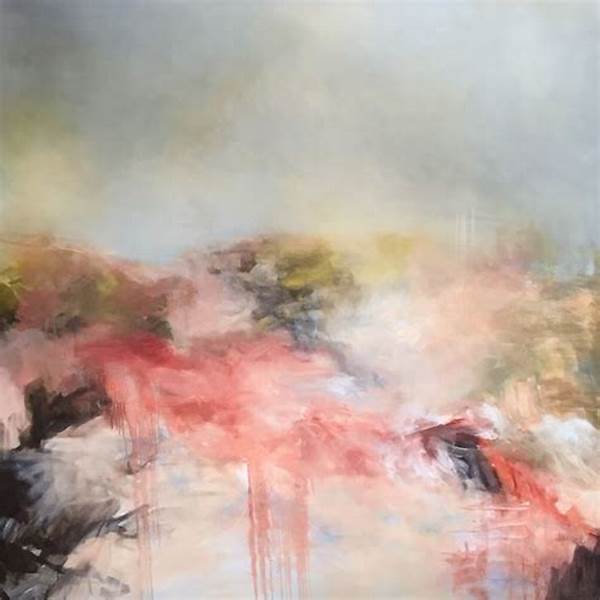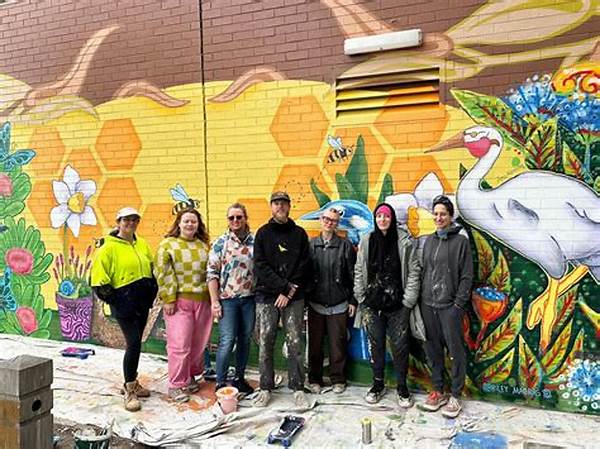In the world of art, achieving a sense of realism is often seen as a pinnacle of skill. Realism demands a careful balance of technique, patience, and vision to bring an image to life on canvas. Among the many skills required, blending techniques for realism play a pivotal role. Mastering the art of blending allows artists to smooth transitions in color and tone, thereby creating images rich in depth and authenticity.
Read Now : Cohesive Brand Image And Design
Understanding Blending Techniques for Realism
At the heart of realistic artwork lies the ability to blend colors and tones seamlessly. This can be achieved using various mediums like oil, acrylics, or watercolor. Each medium presents its own set of blending techniques tailored to enhance realism. For instance, oil paints allow for a slower drying time, which is advantageous for blending as it permits extended manipulation of colors. Acrylics, on the other hand, require swifter action due to their rapid drying nature, hence the need for retarders to keep the paint workable. Watercolors, with their transparency, demand precision and a delicate hand to blend colors without muddling. Whether working on a human portrait or a landscape, understanding and applying these blending techniques for realism is essential for artists striving to create life-like representations.
Core Concepts of Blending Techniques
1. Layering: Applying multiple layers of paint allows for depth and is essential for achieving realism. Layering must be done with consideration to color harmony and transition.
2. Dry-Brushing: This technique involves using a brush with minimal paint to create textured effects, adding dimension to the artwork.
3. Wet-on-Wet: Popular in oil painting, this technique facilitates smooth transitions by applying wet paint over wet layers.
4. Scumbling: A method of applying a thin, semi-opaque paint layer to subtly shift tones without covering underlying layers.
5. Feathering: Involves gently blending colors using a light, feathery brushstroke to soften edges and transitions.
Tools and Mediums for Blending in Realism
The choice of tools and mediums significantly impacts the effectiveness of blending techniques for realism. Brushes of varying shapes and sizes are crucial, each serving a distinct purpose. For intricate details, a fine brush is indispensable, whereas broader areas benefit from larger, flat brushes. Palette knives can introduce unique textures, ideal for landscapes or complex compositions. Additionally, selecting the right medium—be it oil, acrylic, or watercolor—is vital. Each medium offers particular qualities that influence how colors blend. A well-chosen medium, combined with the correct tools, allows an artist to exploit the full potential of blending techniques for realism, leading to more lifelike depictions.
Practical Application of Blending Techniques
1. Understanding Temperature: The color temperature affects mood and realism; warm and cool tones must be blended thoughtfully to mimic natural light.
2. Glazing: Applying a transparent layer of color over a dry area enhances depth and luminosity, crucial for realistic effects.
3. Sfumato: A technique pioneered by da Vinci, involves gradual transitions and soft edges, eliminating harsh lines for more realism.
4. Edge Control: Mastering hard and soft edges contributes to realism by mimicking the natural focus of the human eye.
Read Now : Developing Engaging Subplot Arcs
5. Underpainting: Establishing a monochromatic base layer shapes initial values and tonal gradients, aiding subsequent blending processes.
6. Color Matching: Accurate color matching and blending replicate real-life tones, vital for realism.
7. Patience and Precision: Realism demands time and accuracy in blending for gradual shifts in tone and hue.
8. Use of Retarders: With fast-drying mediums like acrylics, retarders extend blending time, allowing for smoother transitions.
9. Exploring Textures: Not all elements call for seamless blending; distinct textures can emphasize realism in specific subjects.
10. Practice: Refining blending techniques for realism requires regular practice and experimentation with different styles and subjects.
The Science Behind Blending Techniques for Realism
Blending techniques for realism are grounded in the basic principles of light and color. Understanding how light interacts with surfaces informs how shadows and highlights should be replicated in artwork. This scientific approach to blending demands that artists observe their subjects meticulously. Every surface reflects and absorbs light differently; therefore, appreciating these nuances is crucial. Furthermore, the psychology of perception plays a part in blending, as the eye is naturally drawn to contrast and definition. By skillfully manipulating these elements through blending, artists can guide a viewer’s attention and evoke emotional responses. This blend of science and creativity makes realism a dynamic and engaging art form.
Challenges in Mastering Blending Techniques for Realism
For many artists, mastering blending techniques for realism presents certain challenges. The time-consuming nature of achieving seamless blends can test patience and endurance. In addition, each medium presents unique difficulties, from the swift drying of acrylics to the unpredictability of watercolors. However, overcoming these challenges involves dedication and practice. It requires artists to study not only the fundamentals of blending but also to experiment with various methods and materials. Those who persevere can achieve remarkable results, creating art that captivates viewers with its authenticity and emotional depth.
Conclusion: Blending Techniques for Realism
Blending techniques for realism are the cornerstone of creating artworks that resonate with viewers. They require a harmonious mix of skill, knowledge, and creativity. Artists must embrace patience, study their subjects, and continuously practice to perfect their blending techniques. Each stroke and layer bring them closer to capturing the essence of the real world on canvas. As artists refine their craft, they discover the endless possibilities that blending offers, transforming their art into a compelling narrative that mirrors life itself. In this never-ending journey of learning and exploration, blending techniques for realism serve as a bridge between imagination and reality, allowing artists to transcend the ordinary and create extraordinary visual experiences.



